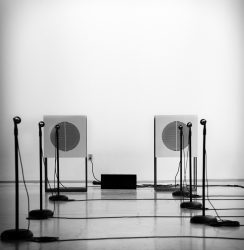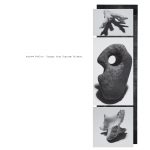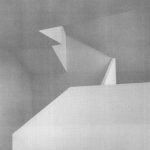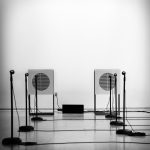ANDREW PEKLER – SOUNDS FROM PHANTOM ISLANDS 
“Phantom Islands are artifacts of the age of maritime discovery and colonial expansion. During centuries of ocean exploration, these islands were sighted, charted, described and even explored – but their existence has never been ultimately verified.”
Before diving into the album I want to draw your attention to the fascinating interactive Phantom Island project website, where you can navigate a map of ‘phantom islands’, read about them and enjoy the fascinating soundscapes Andrew Pekler created as commissioned for the Fourth Worlds: Imaginary Ethnography In Music And Sound exhibition.
Just explore the map or engage ‘cruise mode’ to navigate to all different islands. This will probably keep you busy for a while but be sure to return here.
Sounds From Phantom Islands (the album) presents ten tracks (about 40 minutes) that were created for this online project. The term ‘Fourth World Music’, used for music for more or less imaginary parts of the world, is closely related to the music of Jon Hassell, and this is no exception: Hassell’s spirit is present all over the islands, even without his characteristic trumpet sound.
Pekler presents a “quasi-ethnographic catalog of music and synthetic field recordings” – a stunning set of “finely elaborated chordal motifs float like fog over fictional maritime landscapes.”
JOAGUÍN GUTIÉRREZ HADID – SÛR 
From the LINEr notes (pun intended) we learn that this music was originally intended for a site-specific installation at Casa Victoria Ocampo, Buenos Aires, in 2018. During the 1930s this manor served as the headquarters of Sur – ‘a cosmopolitan and Europeanizing journal that sought to “modernize” the local artistic scene’.
The source material for this installation was a fragment of Victoria Campo reciting a poem by Jorge Luis Borges – but it is processed in such an intense way that it is not recognizable as a human voice at all, at least not until halfway into the fifth track Pour.
“By freezing, dilating and dissecting the granulated texture of the voice, it ceases to be the neutral conductor of an external meaning, unfolding its own unfathomable polysemy.”
One could argue that the main protagonist of this recording is the house itself since áfter the original installation Joaguín Gutierrez Hadid went back to play back the installation recording onto the piano in the living room of the house.
“With this source material, the pieces composed at the studio were filtered by an impulse response of the “room” within the piano—a spatial setting that emulates its specific acoustical qualities.”
The result is a beautiful album that has found the right place at Richard Chartier‘s Line (Imprint) label.
I am not familiar with the current Buenos Aires’ art scene, nor do I know if (and how) it has ‘modernized’ since the 1930s with or without the help of Sur. But I dó feel that this is sound-art that probably perfectly fitted Victoria Ocampo’s original intentions.
ROBERT GERARD PIETRUSKO – SIX MICROPHONES 
Six Microphones is a set of recording excerpts from a 2013 installation by Robert Gerard Pietrusko, a designer, composer and educator (professor of Landscape Architecture at Harvard University) living in Somerville, Massachusets.
A “site-determined composition of audio feedback, which explores the mutually constitutive relationships among sound, space, and audience.”
‘Site-determined’, by the way, is not exactly the same as ‘site-specific’: “No sound is generated, it is only amplified. All tones and modulations emerge from the space itself and are dependent on the interaction of three elements: (1) the composition as it unfolds in time, implemented as a changing combination of microphone amplitudes (2) the particular geometry and materiality of the space in which it is sited, and (3) the physical presence of listeners within this space.”
The installation setup may look relatively easy – (six) microphones placed before two speakers – but the resulting feedback definitely isn’t, even more so when you look at the ‘score’ with all 5376 amplitude set points that is included in the 2-LP version (which is released on Counter Audition; the digital version is available from Line).
It’s a highly conceptual, almost scientific approach to feedback music, that can probably be best experienced ‘live’ (wrong word here – maybe I should write ‘in real time’). But the recording excerpts – mastered by Taylor Deupree – do a great job in representing the experience at home, provided you listen on a decent sound set of course. It’s a captivating, inescapable sound, almost physical since the frequencies and modulations are impossible to ignore and feel like they come from the inside of your skull.
Pietrusko’s work is exhibited in well-known venues around the world, from Paris to Tokyo to San Francisco to Venice. This is clearly not just ‘music’, it’s what we call ‘sound-art’.






